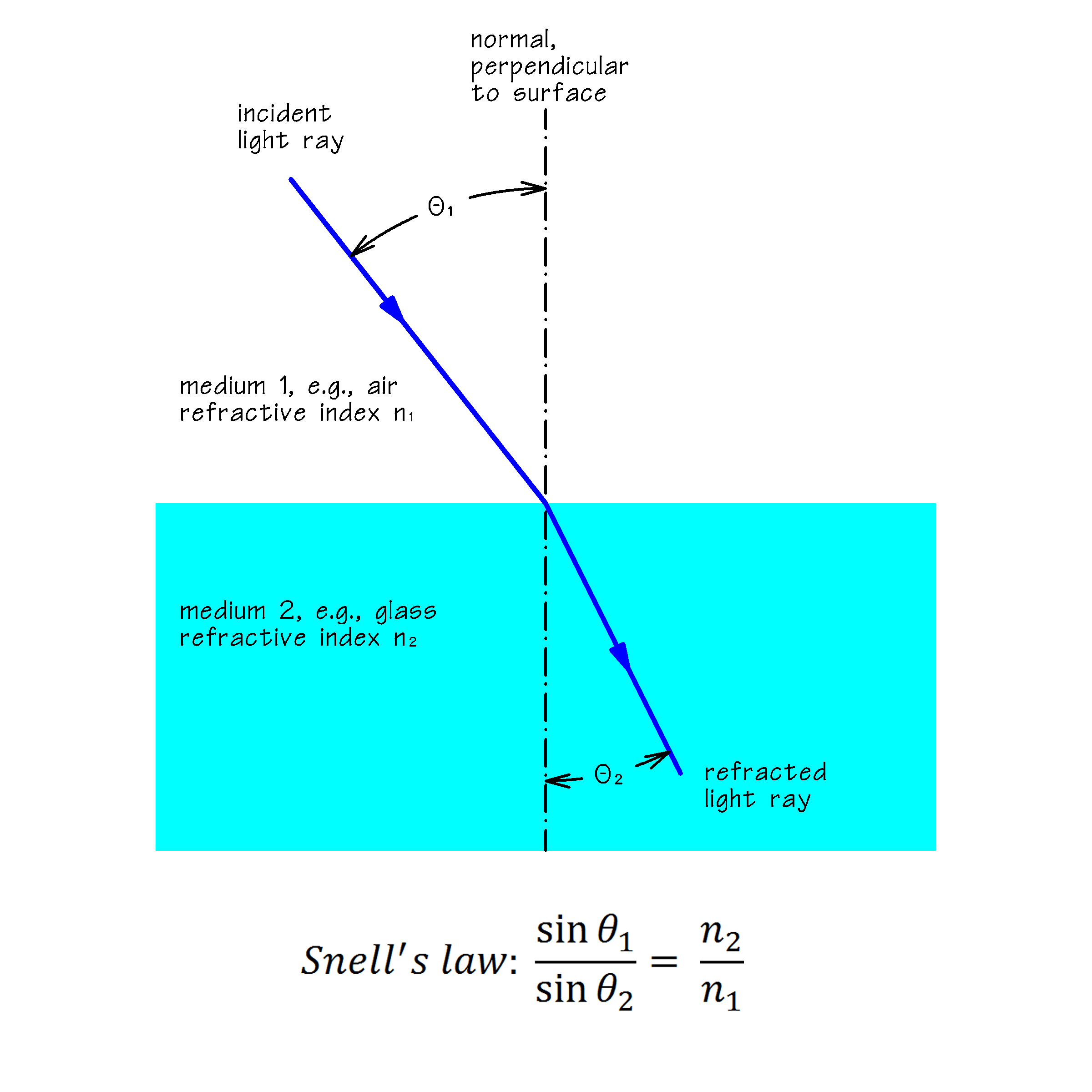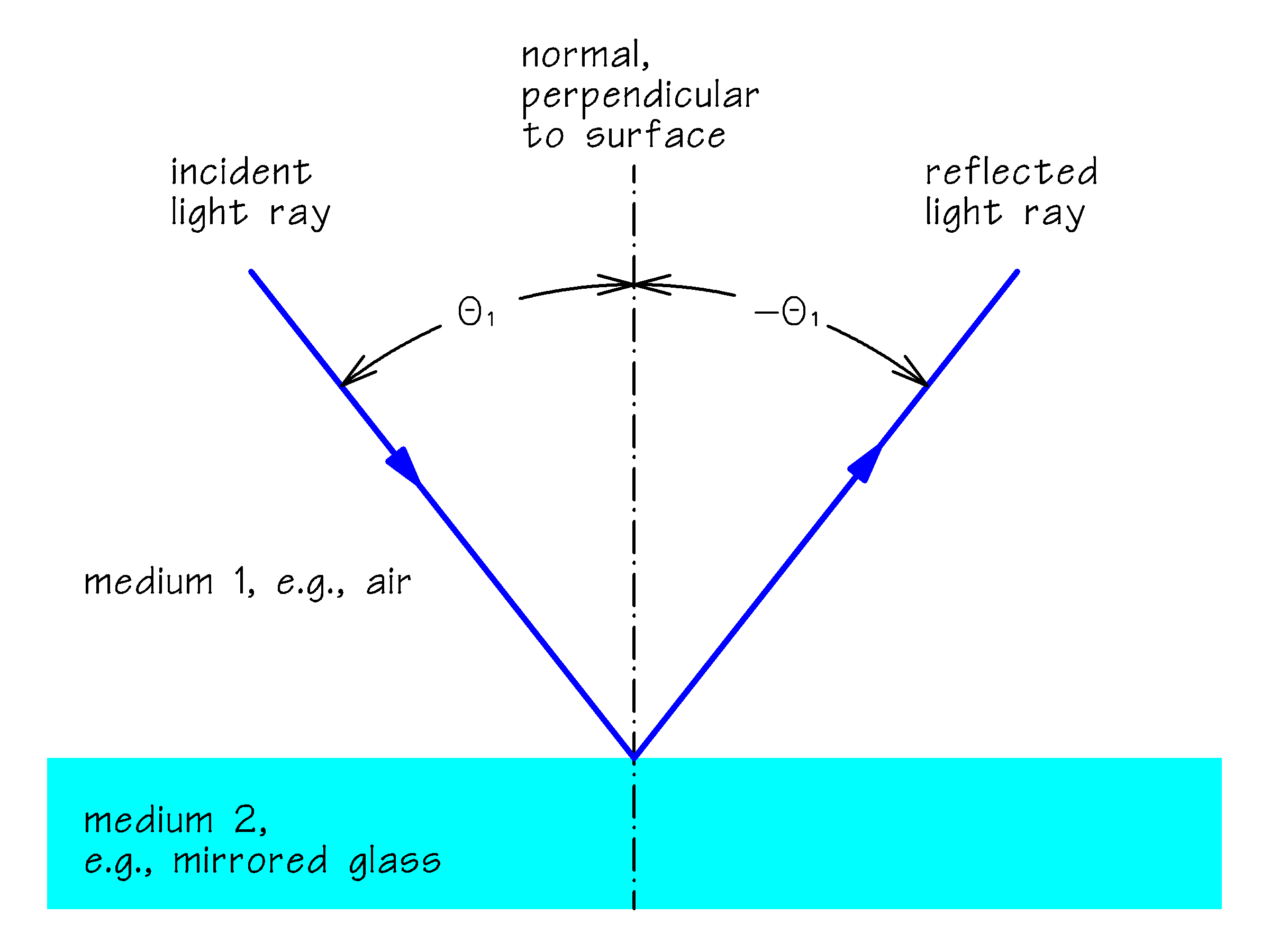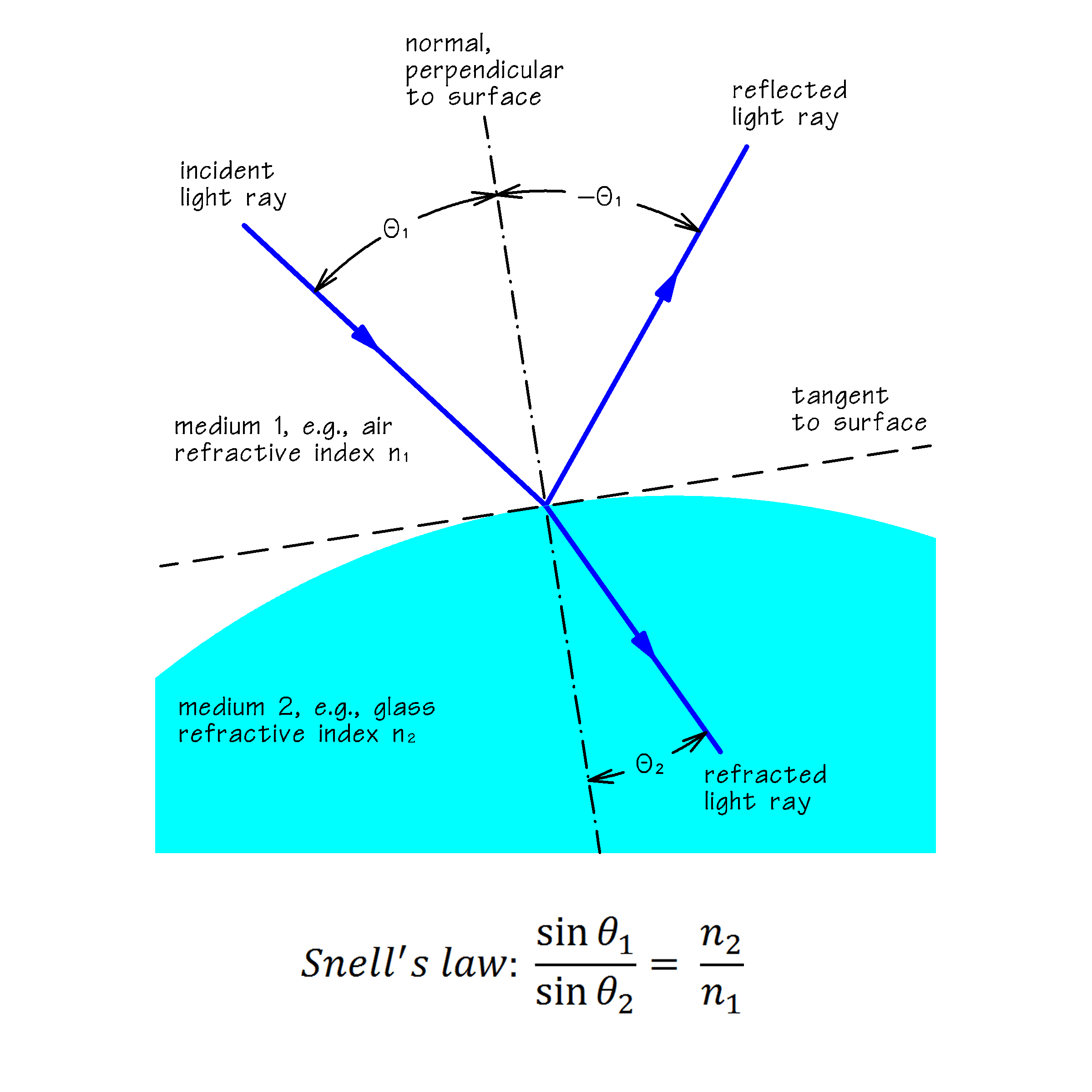Geometrical Optics
Geometrical optics describe the behavior of light rays. In contrast, physical optics describe the behavior of light waves. Geometrical optics include refraction and reflection whereas physical optics include diffraction, interference, and other light wave behavior. There is some overlap between geometrical and physical optics and some phenomenon can be explained by either. Both geometrical and physical optics are subsumed by the more general electromagnetic theory.
Geometrical optics are very helpful for understanding the larger scale behavior of optical systems such as astronomical telescopes through the study of refraction and reflection.
Refraction
Refraction is the bending of light rays as they pass from one transparent medium to another, such as light passing from air into a glass lens. It is well known that the speed of light in a vacuum is a constant. Perhaps less well known is that light moves more slowly in other transparent mediums such as air, glass, or water. The speed with which light moves through non-vacuum mediums depends upon the wavelength of the light. The changing speed of the light rays is the explanation for the bending or refraction.
Light speeds are very large numbers and awkward to use in computations. It is customary for computational purposes to instead use the ratio of the speed of light in a vacuum to the speed of light through the medium, a number known as the refractive index of the medium. The refractive index is always greater than or equal to 1.0. The refractive index of air is about 1.0003 and various optical glasses have refractive indexes of about 1.4-2.0. Fluorite glass, well known for its use in some astronomical refractor telescopes, has the distinction of having one of the lowest refractive indexes of commonly available glasses. Optical glass manufacturers publish the refractive indexes of their glasses with various wavelengths of light in their technical specifications or reference catalogs, of which the Schott Glass Catalog is a popular example.
It is important to remember that the speed of light through a medium depends upon the wavelength of the light. Therefore, the refractive index of the medium also varies by wavelength. The varying refractive index of a glass lens accounts for the chromatic aberrations found in simple refractor telescopes and is the reason for the design of doublet and triplet lens elements in better quality telescopes.
Snell's Law describes how light bends, or refracts, when passing from one medium to another.

|
Reflection
Reflection is the changing of direction of light rays as they pass from one medium to another which causes the light ray to return to the original medium, such as light passing from air to a mirrored surface and returning back into the air.
The laws of reflection are most simply stated that the angle of the reflected light ray is equal to the angle of the incident light ray measured to, and on the opposite side of, the normal to the surface. The normal to the surface means perpendicular to the surface.

|
Curved Surfaces
The laws of refraction and reflection apply to curved surfaces as well as flat surfaces. When applied to curved surfaces the normal is taken to be perpendicular to the tangent to the surface. The laws of refraction and reflection on curved surfaces can be summarized as follows.

|
GoldFocus uses the laws of refraction and reflection in the design of the GoldFocus Plus Mask and Analysis Software for measuring the optical aberrations caused by un-perfect collimation.

